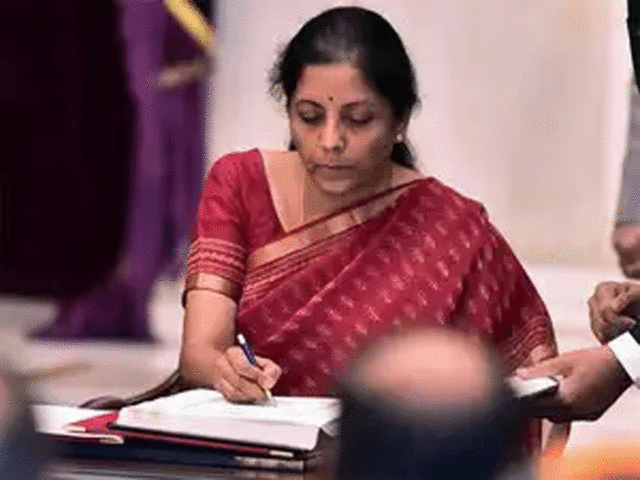Economic Survey 2020 has a clear message for Nirmala Sitharaman
Growth in the current fiscal year would come in at 5 per cent, as per Economic Survey.
by ET Online
The Economic Survey 2019-20 tabled today pegged India's GDP growth for 2020-21 between 6 to 6.5 per cent. Growth in the current fiscal year (2019-20) would come in at 5 per cent, it said.
For 2019-20, the govt's fiscal deficit was budgeted at 3.3 per cent of GDP compared to 3.4 in the previous financial year. However, the current stress in the economy as shown in the survey seems to have given FM Nirmala Sitharaman a clear message that she should go easy on the deficit target and instead open the spending tap a bit more.
The Survey suggests a way for Sitharaman to find fiscal legroom in a tight space. It says she should look at cutting the govt's food subsidy bill. That way the govt might be able to keep a leash on expenditure, the survey says.
In the absence of any noticeable activity in the areas of private investment and consumption and with exports sputtering in a roiled world, public investment remains the only potent turnaround tool in the government's hands. In such a scenario, stanching government spending could necessarily means that India would take longer to come out of the current morass and find itself on the growth path again.
Amid an uncertain environment for global trade, India slowed down to 4.8 per cent in H1 of the current financial year, significantly below the 6.2 per cent recorded in H2 of 2018-19. A steep fall in investment caused by sluggish consumption hit growth from 2nd half of 2018-19 to 1st half of 2019-20, the survey said.
It was a far cry from India’s record of growth with macroeconomic stability over the last five years, when the annual average growth rate was 7.5 per cent. The decrease was caused primarily by a slump in growth of consumption, the mainstay of India's GDP. In an attempt to boost demand, the RBI did significant monetary easing during the fiscal, with a series of repo rate cuts. But they largely proved ineffective in the face of the financial strain facing the economy.